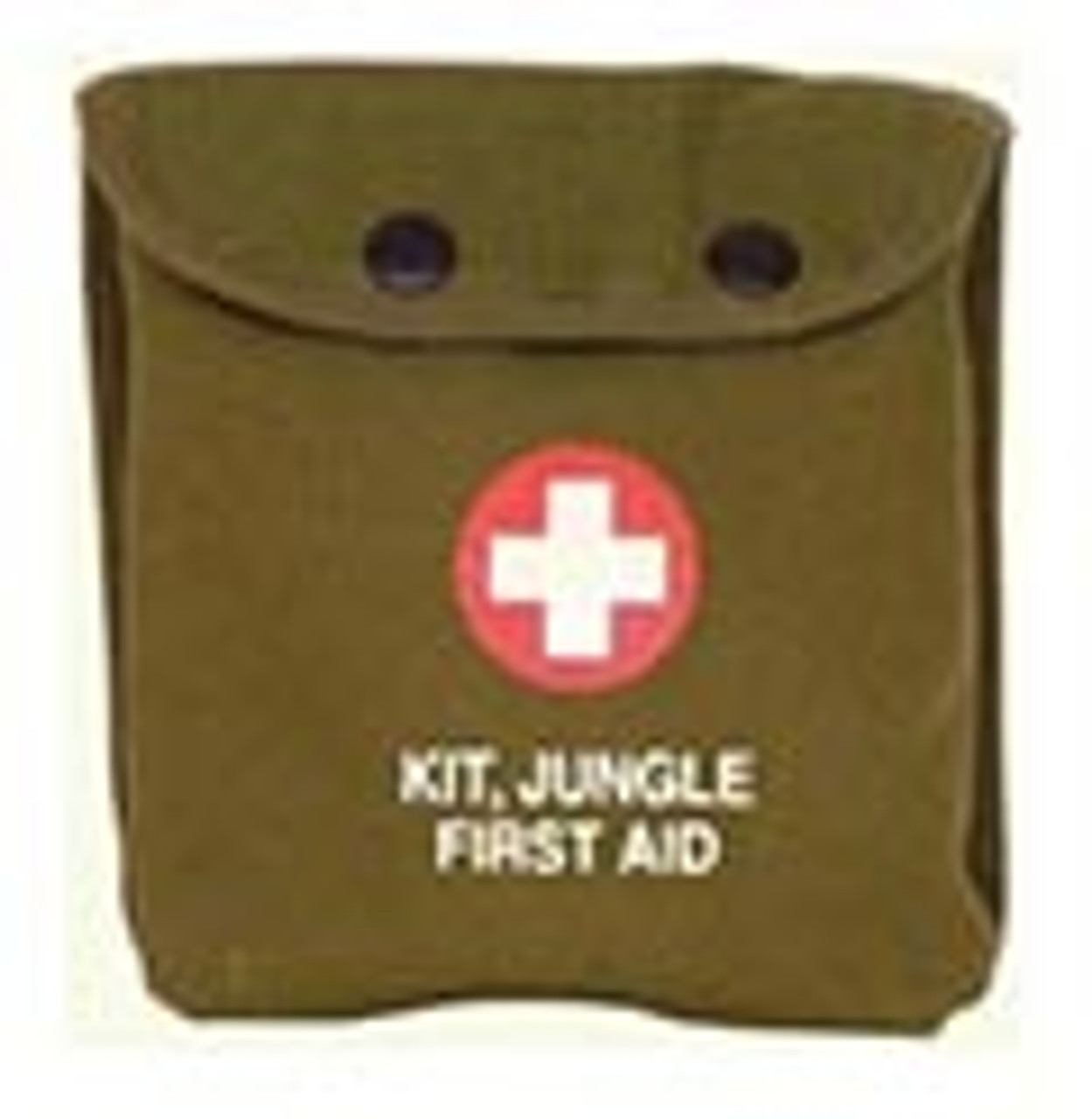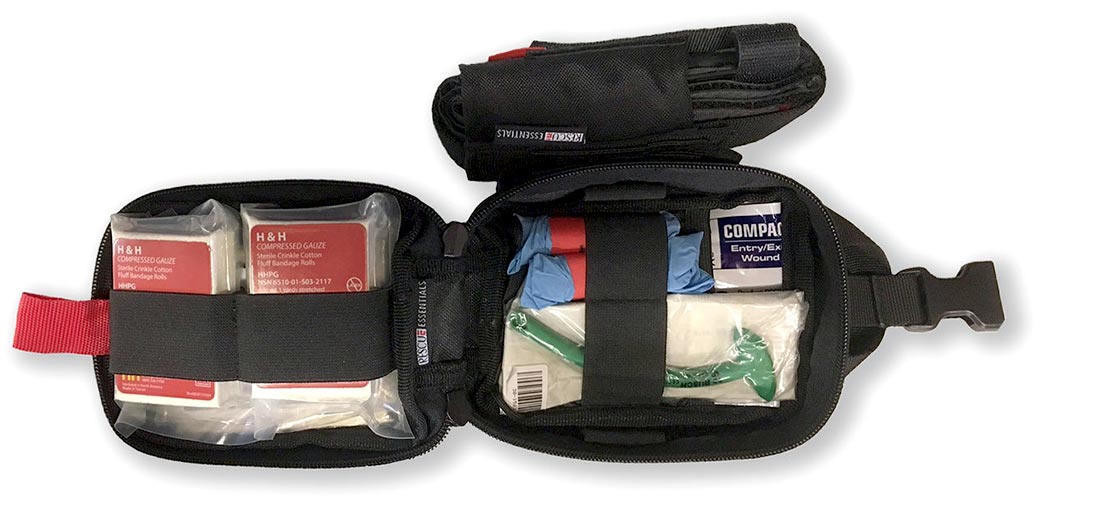What is an IFAK?
Today, IFAK is usually understood to mean “Individual First Aid Kit”, or “Improved First Aid Kit”. But long before the acronym “IFAK” came into use, the military was issuing small kits designed to treat or prevent various illnesses and minor injuries. The “Kit, Jungle, First Aid” shown below is from the Vietnam era, and the contents reflect the then-current understanding of jungle combat risks.
Above: Vietnam era contents: field dressing in cardboard sleeve, insect repellent, sulfadiazine tablets, iodine applicator (in a wooden tube!), atabrine tablets, halazone tablets, 3 band aids and “Frazier's Athlete’s Foot Treatment.
The above kit is definitely an “individual first aid kit” but is a far cry from most kits that are currently considered IFAKs. Today’s IFAK is more of a trauma kit than a first aid kit, and rarely contains band-aids. Instead, it is designed to address immediate life-threats such as exsanguination (bleeding out), airway and breathing issues, hypothermia etc.
While there is no uniform contents list for IFAKs, they are configured to address the most likely risks and are specific to the training that the person has received. In the case of a Combat or SWAT Medic, this might include materials for invasive procedures such as needle decompressions, airway insertions etc.—procedures that most laypersons are not qualified to perform.
One thing that modern IFAKs have in common, is the inclusion of a tourniquet, and training on tourniquet use is becoming widely available. Increasingly, hemostatic agents (blood-stopping agents) are also included, as many regulatory agencies have approved such items for use. Some are even available OTC. Bleeding is the most common preventable cause of death, both on the battlefield and in civilian life, hence the National “Stop The Bleed” initiative that is underway across the US.
Above: U.S. Customs and Border Patrol IFAK
Why Do You Need One?
When a life-threatening emergency occurs whether from an automobile accident, an active shooter event or an industrial mishap, the most likely person to be the first on-scene is a civilian. Exsanguination can occur in just a few minutes and the ability of civilians to respond effectively to major bleeds is critical to saving lives. Even an EMT or paramedic with advanced training is likely to carry a simple IFAK on their person or in their vehicle, as major medical bags are too large to keep close at hand.
If you travel, hike or camp in remote places, participate in shooting sports, work with heavy equipment or have similar exposure to possible traumatic injury, there is no question that having an IFAK nearby can save a life—possibly your own or that of a loved one. An IFAK that is tailored to your own risk profile and level of training is probably the least expensive and most effective insurance policy you can have against needless and tragic loss of life.
Most IFAKs are contained in small sewn pouches that have room for the addition of band-aids and other traditional first aid items, but their main purpose is to treat severe trauma at the point of injury. Making your IFAK heavier or bulkier by adding minor first aid treatments is therefore not commonly recommended. When it comes to IFAK, the simpler the contents, the faster and they can be accessed and effectively applied. With that in mind, there is almost certainly a short list of contents that can make you an effective life-saving responder in an emergency.

